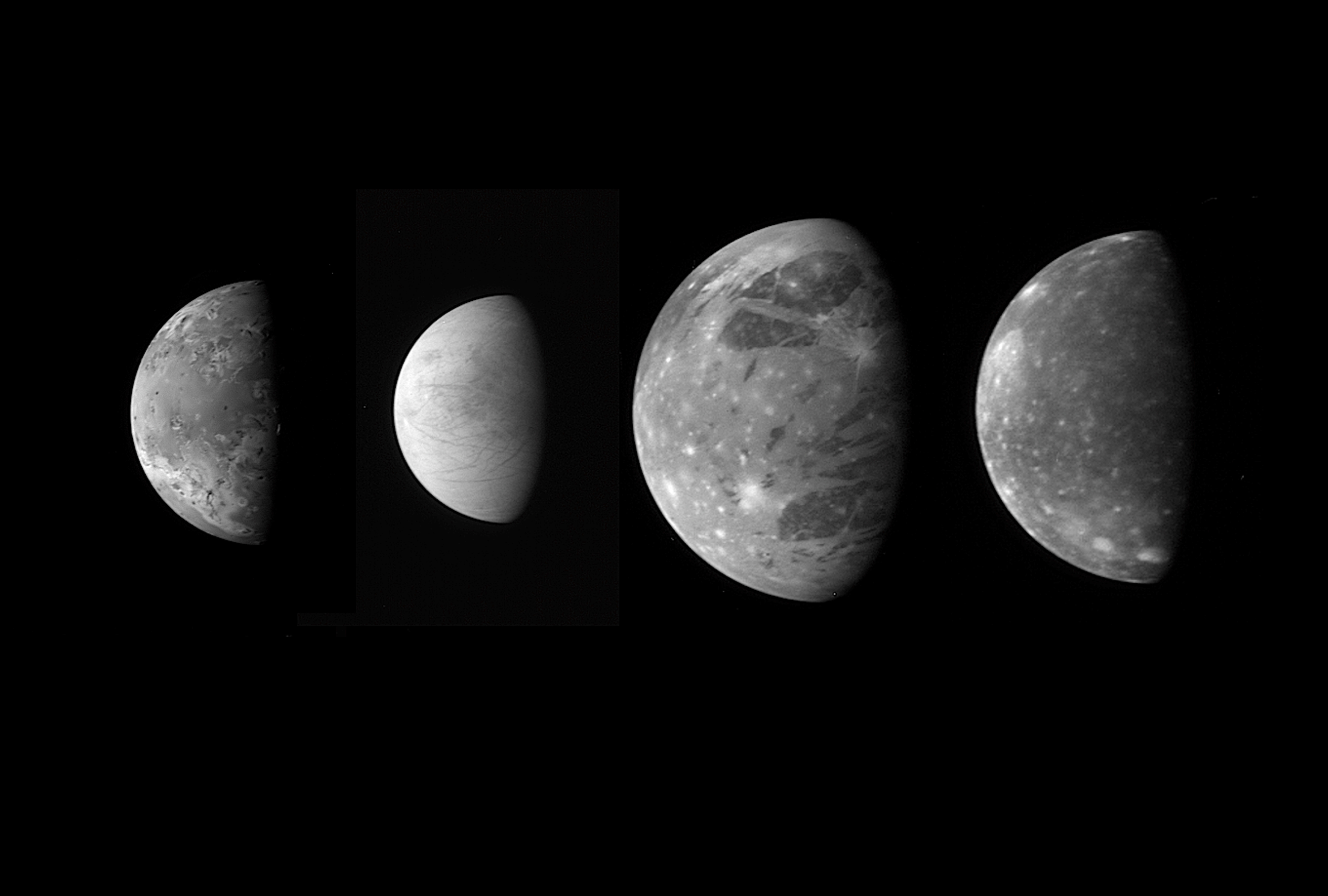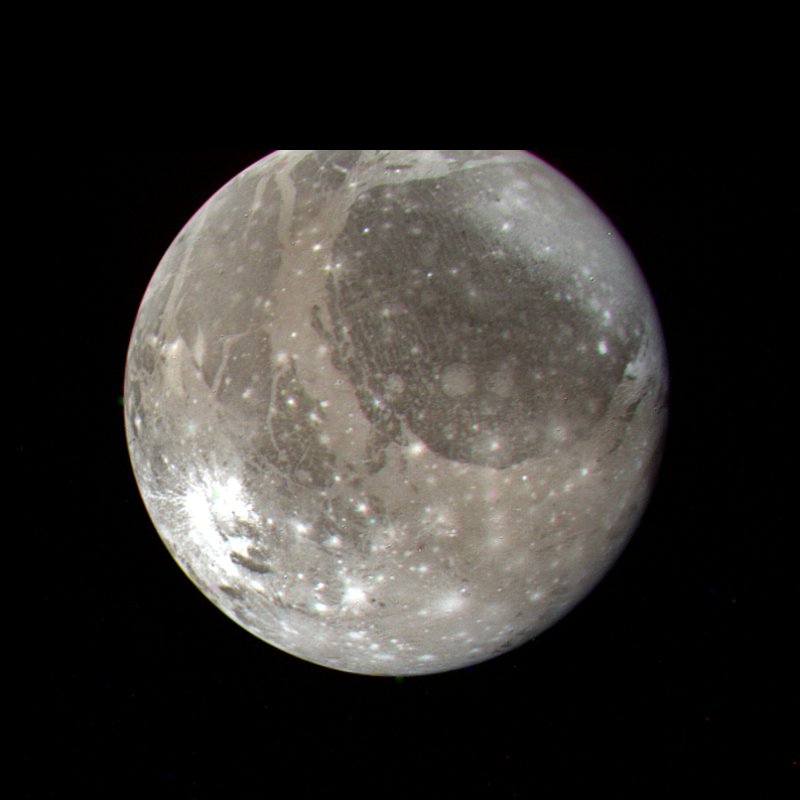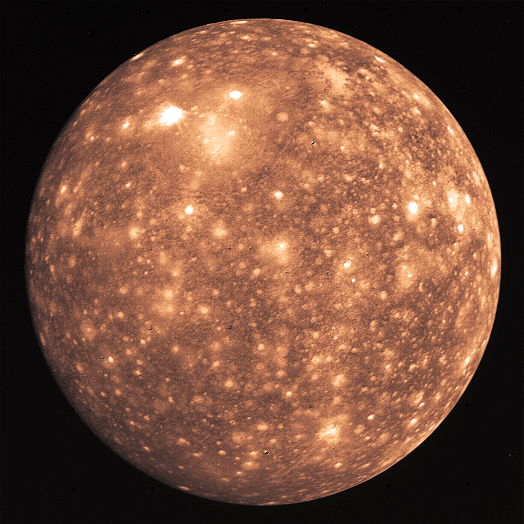Photos: The Galilean Moons of Jupiter
67 moons orbit the great gas giant Jupiter; of these, the four largest are known as the Galilean moons, having been discovered by Galileo Galilei using his telescope in 1610. The four moons are Io, Europa, Ganymede, and Callisto, in order of distance from Jupiter. (Their names derive from lovers of Zeus.) These moons provided evidence that not all celestial bodies orbit the Earth, a powerful revelation as, up until that time, astronomers considered Earth the center of the universe. [See Jupiter’s Moons reference page for more information.]
Io
Io orbits closest to Jupiter, out of the four Galilean moons. Io has been studied by spacecraft from Pioneer 10 and 11 in 1973 and 1974, all the way up to New Horizons in 2007, augmented by Earth- and space-based telescopes. This satellite possesses volcanoes, the only celestial body in the solar system other than Earth known to harbor volcanic activity. In fact, Io represents the most geologically active object in the solar system. Io contains an iron or iron sulfide core and a brown silicate outer layer, producing colorful orange, yellow, black, red, and white patches on the surface. Io also possesses sulfur dioxide snowfields, covering much of its surface.
Europa
Europa, slightly smaller than Earth’s moon, represents one of the largest bodies in the solar system, though smaller than the other Galilean satellites of Jupiter. Cracks and streaks mark the entirety of the icy surface, which contains few craters, as the shiny, smooth skin of the moon only dates back 20 to 180 million years, a youthful age. Researchers speculate that a liquid water ocean lies beneath the ice.
Ganymede
Ganymede, the third Gallilean moon, looms larger than the others. It compares in size to Mercury, but possesses about half the mass of that planet. Ganymede distinguishes itself from the other Galilean moons by possessing its own magnetic field. A thick crust of mostly ice wraps around the satellite’s iron core. Highly cratered dark regions cover 40 percent of Ganymede’s surface, while the remaining 60 percent hosts a light grooved terrain, forming intricate patterns on that moon.
Callisto
Callisto, the fourth Galilean moon, farthest from Jupiter, represents the most heavily cratered object in the solar system. The moon’s landscape remains largely unchanged since the time of its formation, attracting much interest from researchers. Callisto roughly approximates Mercury in size, but the moon possesses a lower density. It also experiences the least amount of effect from Jupiter’s magnetic field, as it orbits farther away from the planet, beyond Jupiter’s primary radiation belt.
Breaking space news, the latest updates on rocket launches, skywatching events and more!

Space.com is the premier source of space exploration, innovation and astronomy news, chronicling (and celebrating) humanity's ongoing expansion across the final frontier. Originally founded in 1999, Space.com is, and always has been, the passion of writers and editors who are space fans and also trained journalists. Our current news team consists of Editor-in-Chief Tariq Malik; Editor Hanneke Weitering, Senior Space Writer Mike Wall; Senior Writer Meghan Bartels; Senior Writer Chelsea Gohd, Senior Writer Tereza Pultarova and Staff Writer Alexander Cox, focusing on e-commerce. Senior Producer Steve Spaleta oversees our space videos, with Diana Whitcroft as our Social Media Editor.





